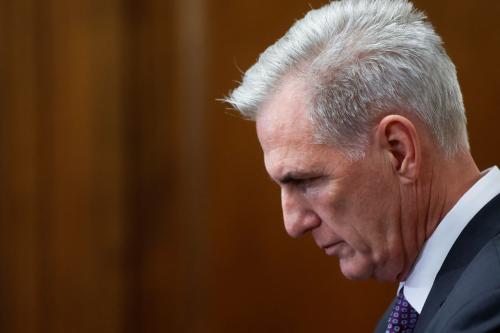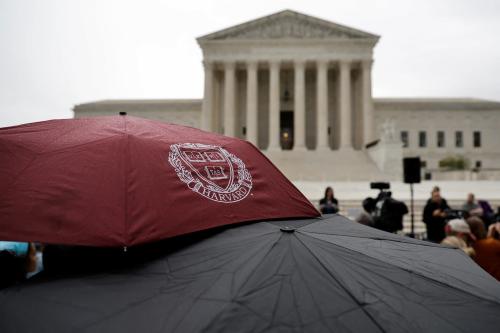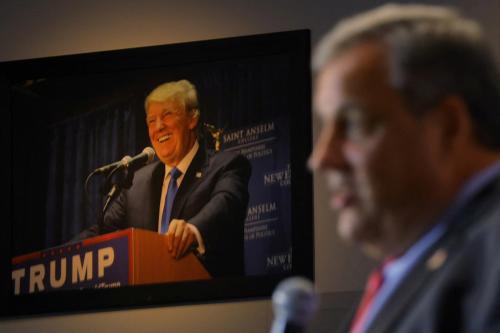Former Vice President Mike Pence has chosen to run against the President he served for the Republican nomination for president. In all of American history we haven’t seen a vice president run directly against a president he served since Vice President Thomas Jefferson ran against President John Adams in the election of 1800.[1] In 1940, Franklin Roosevelt’s vice president, John Nance Garner ran for the Democrat nomination, but for most of that time Roosevelt was not an announced candidate. When Roosevelt did get in, at the last minute, Garner lost handily.
For most of his time in office Pence was steadfast in the role of “lap dog” — as he shored up the evangelical base of the party for Trump. And yet, in the defining moment of the Trump presidency, when the President wanted the Vice President to interrupt the electoral vote count, Pence chose the Constitution over Trump. The enormity of this decision eclipsed his previous years of loyalty and has put the two men on a collision course as they seek the 2024 Republican nomination.
In modern-day American politics we are used to seeing loyal pairs of presidents and vice presidents. That is a function of the modern nomination system where the choice of the vice president is no longer integral to achieving the nomination itself.[2] In the old-fashioned system the convention chose the president and the vice president. The vice presidency often went to the faction that lost the presidency as a sort of consolation prize. Sometimes these pairings worked out, but more often than not the relationship has been reminiscent of a badly arranged marriage — put together by political expediency. In many of those matches the relationship was cool and distant if not downright hostile.
An especially hostile pair was formed at the turn of the century in the case of “the Hot Tamale and the Indiana Icicle” — one wit’s description of the Republican presidential ticket of 1904 featuring Theodore Roosevelt and Charles Fairbanks. In order to please the Republican Party’s conservative wing, which was not at all happy with the radical reformist politics of Teddy Roosevelt, that year’s convention forced Senator Charles Fairbanks (R-Ind.) upon him as his running mate. Fairbanks was as different from Roosevelt as possible: He was cold and distant, in marked contrast to Roosevelt’s famous ebullience; he was heir to the old-guard McKinley faction within the Republican Party, in contrast to Roosevelt’s more modern aspirations for his party; and he was from the Midwest, whereas Roosevelt hailed from New York City. Roosevelt’s true love was a Congressman named Robert R. Hitt of Illinois. But getting Hitt on the ticket would have meant a fight between Roosevelt and the convention bosses. In the end, the vice presidency was not significant enough for Roosevelt to fight over and he accepted Fairbanks.
Hence one of many loveless matches. Fairbanks was relegated to obscurity almost immediately, perhaps because he publicly opposed many of Roosevelt’s more progressive programs, such as the Square Deal. Fairbanks was so out of the loop that when Roosevelt left town important tasks were given to William Howard Taft, his Secretary of War and anointed successor. Having nothing to do in the executive branch, Fairbanks took seriously his job of presiding over the Senate, where he occupied himself by leading convoluted schemes against Roosevelt’s initiatives. Like Thomas Jefferson and John Nance Garner before him, Fairbanks spent much of his vice presidency running for president — but unlike Jefferson, he did not succeed. Roosevelt threw his popularity behind Taft when his term ended. Taft beat Fairbanks at the 1908 Republican convention by a comfortable margin.
Pence seems destined to end up following in the footsteps of his fellow Indianan, Vice President Fairbanks. These days primary voters, not convention delegates, decide the nomination, but among those voters Pence trails badly, running in the single digits even though he is a former vice president with high name recognition. Although Trump could still lose his nomination race, the chances that he would endorse Pence are next to nothing. At this point, it looks as if Pence’s one act of disloyalty to Trump could cost him the nomination.
[1] Jefferson and Adams ran against each other in the general election. In those days there were no primaries, and the second runner up became the vice president.
[2] For more on this see: Picking the Vice President, by Elaine C. Kamarck at: https://www.brookings.edu/wp-content/uploads/2020/07/Picking-the-Vice-President.pdf







Commentary
Pence vs. Trump: Not the first time a vice president and president have not seen eye to eye
June 7, 2023